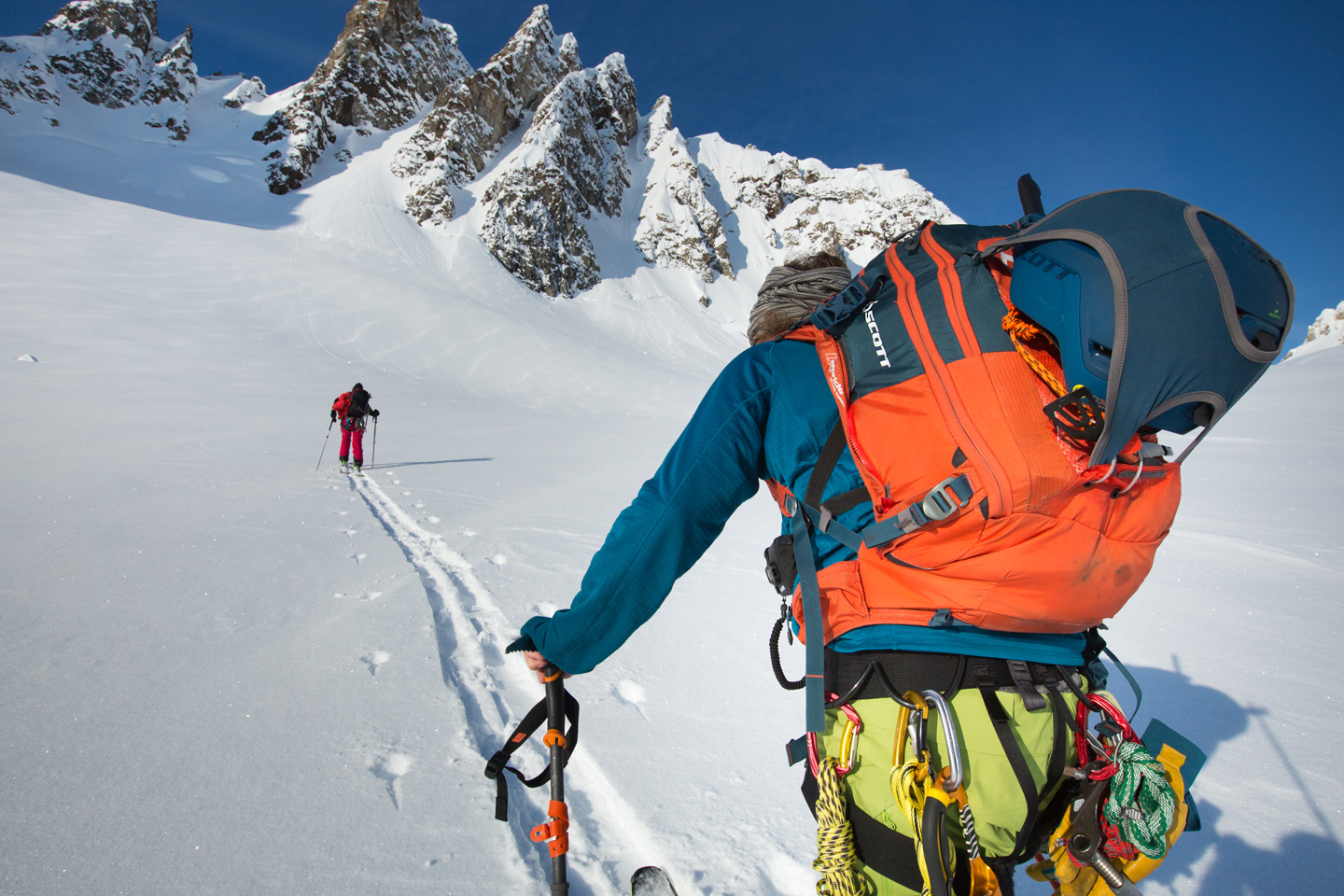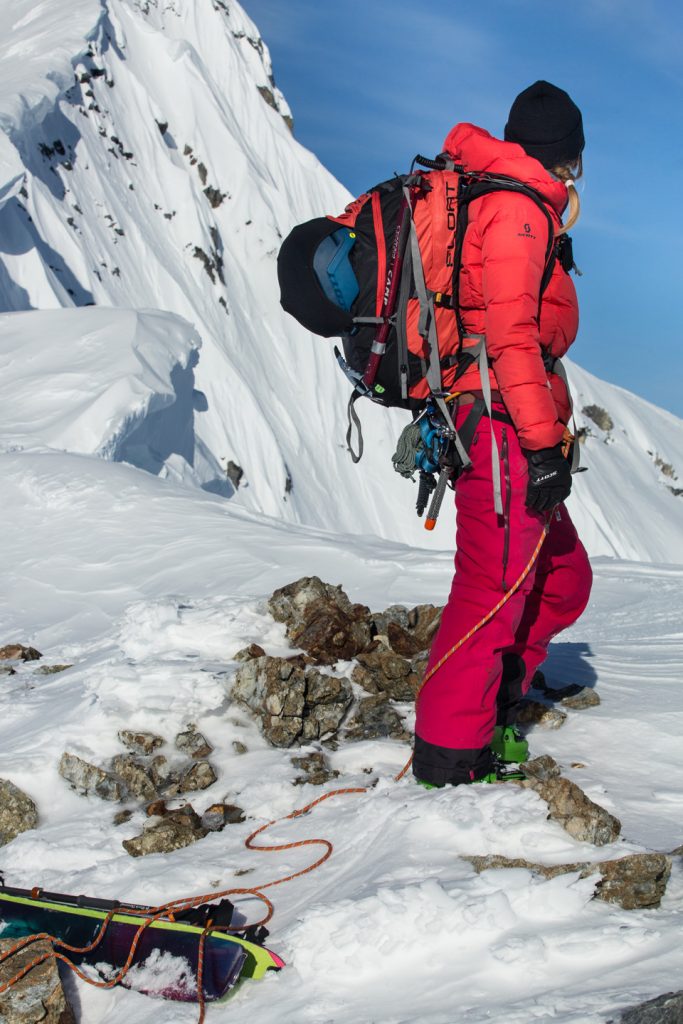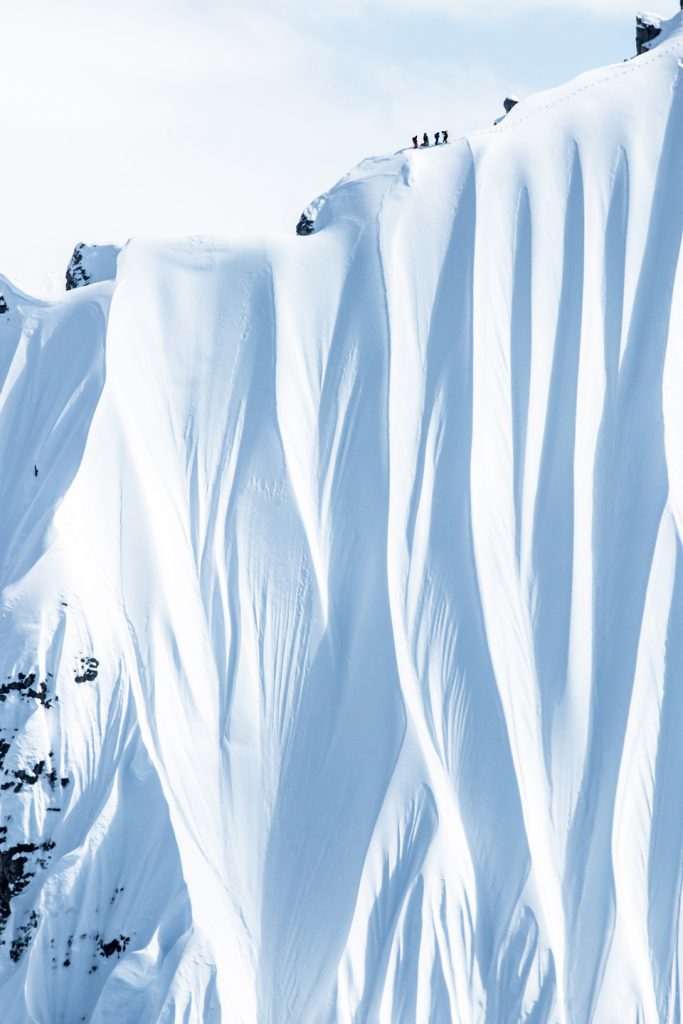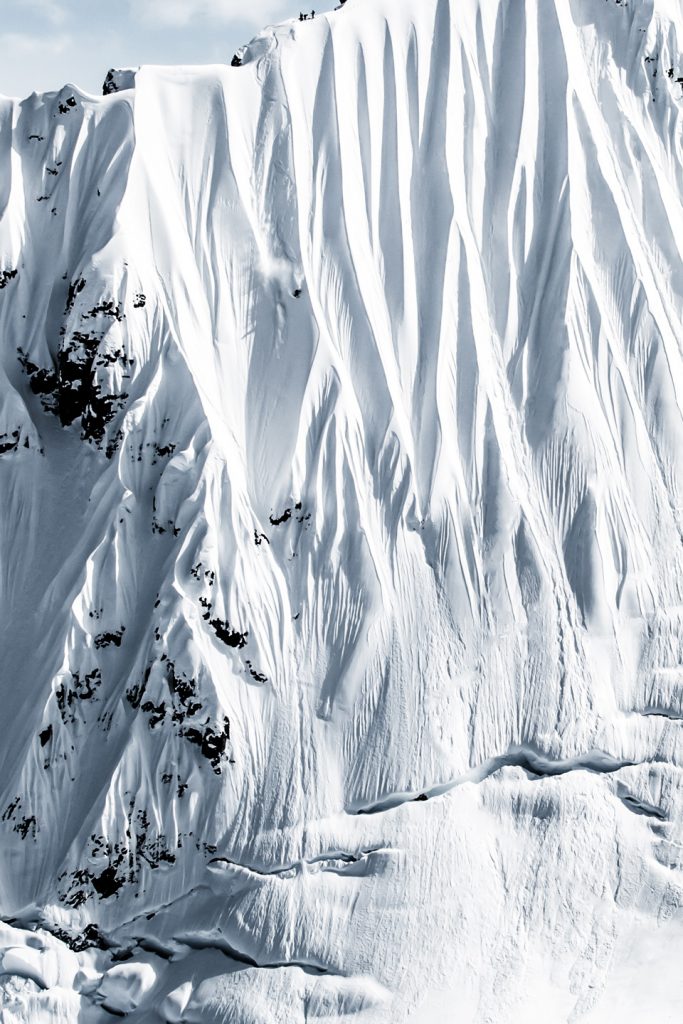Adventure
The Peak of Ill Repute
Fear and Cabin Fever in Alaska’s Fairweather Range
Sometimes all you need for motivation is a package of Oreos, a few Will Farrell movies, and a spare toilet seat. Or at least they help when you’re spending three weeks on a glacier, deep in the mountains of coastal Alaska.
That’s where Sam Cohen and a crew of fellow skiers found themselves in April of 2017, staring up at an imposing, 800-foot wall of gnarled spines, overhanging 2,000-plus feet of rock, ice and crevasses. All around them rose the dramatic peaks of the Fairweather Range, a cluster of mountains outside of Haines, and the imposing face above was “The Brothel.” Only a few souls had ridden the archetypal-Alaskan zone, including snowboarder Jeremy Jones, and all had accessed the knife-edge ridge via helicopter. This time, every vertical foot would have to be earned.
The group had all the experience needed to make it happen; beyond SCOTT athletes Cohen and McKenna Peterson, the lineup included skiers Zach Halverson and Henry Gates, guide and snow specialist Steve Mace, filmer Tim Jones, and photographer Elliott Bernhagen. The mission, organized by Sam, was ambitious. Two weeks ago, they’d been dropped off on the glacier below the Brothel, and for the past 14 days they’d battled terrible snow conditions, sickness and cabin fever as the ticked off the lines surrounding their nylon-domed home. Each morning, they’d start climbing, stacking up a few thousand feet of dubious skiing. Each night, they’d discuss if tomorrow was the day for an attempt on the Brothel. It had always ended with “no.”
Until last night. Last night, they’d decided it was time.
And now they stood below the behemoth, ready to begin the long, uncertain climb to the summit. After two weeks of struggling and defeat, they’d given the Brothel a different name, equally suggestive and even more fitting: the Peak of Ill Repute.
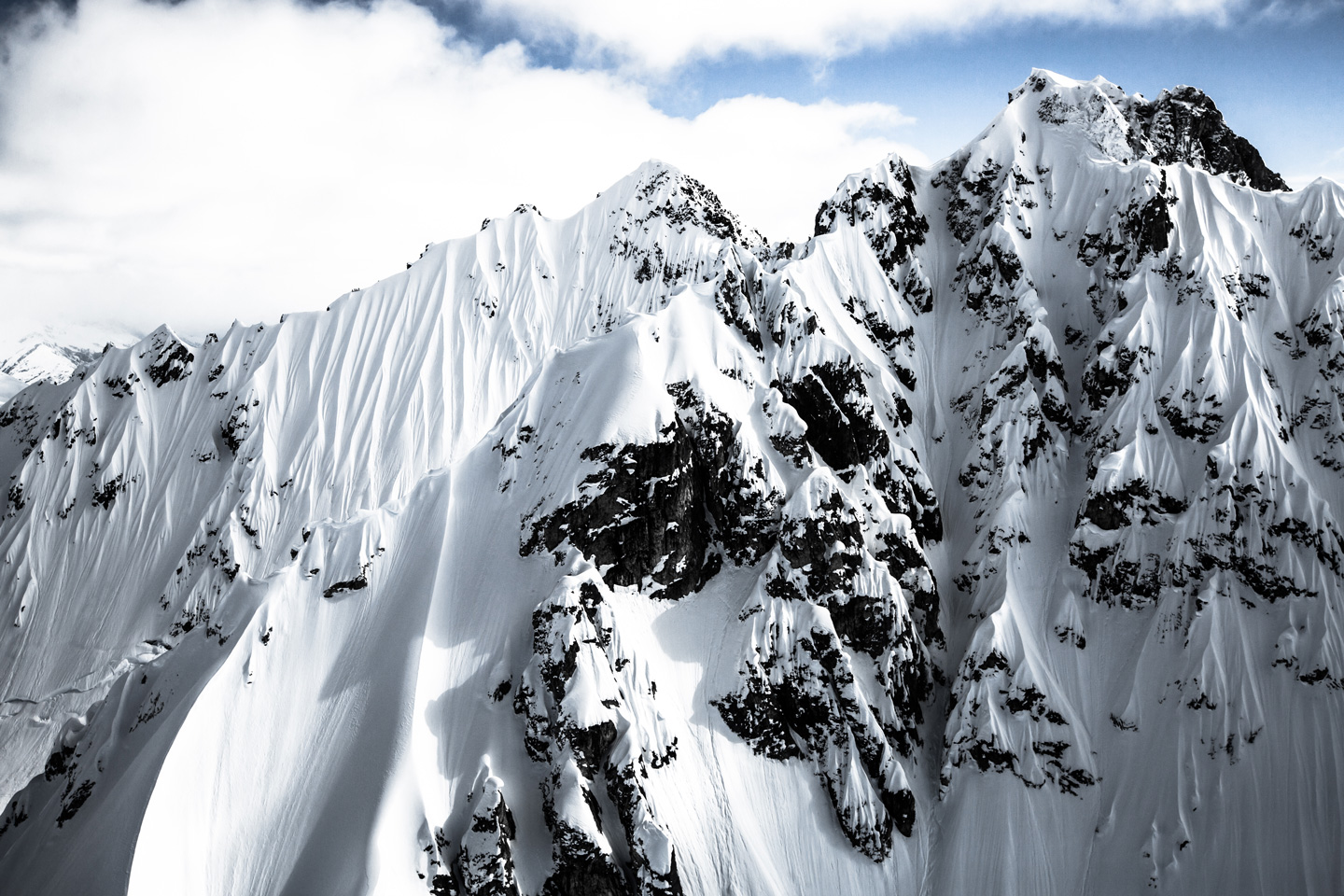
above Sam Cohen first saw the Brothel in a photo during a trip with SEABA Heliskiing in 2012. Five years later, he was standing above the real thing.
Sam first saw the Brothel in a photo, during one of his first trips to Haines with SEABA Heliskiing. It was an image of Jeremy Jones, and the particular face stuck in his mind, for good reason: the Brothel is archetypal Alaska, a wall of narrow, perfectly formed spines that is both frightening and enticing. It’s exactly the kind of terrain that draws people like Sam north every season, and by 2012 he was already planning to repeat Jones’ feat himself. He knew he was going to ski it. He just didn’t know when.
The opportunity came five years later, during Sam’s annual spring Alaska mission. It wasn’t an ideal season in Haines, or Alaska in general; a stream of Arctic winds had scoured the coastal ranges, making the usual go-to zones unreliable at best. So, rather than gamble on a heli, he decided to go with his long-awaited wildcard: the Fairweathers.
Any such endeavor requires a solid team, and with uncertain snow conditions, some undoubtedly heavy lines, and the ever-present danger of being stuck in a tent for weeks, for this trip it would be especially important. Luckily, Sam already had his roster.
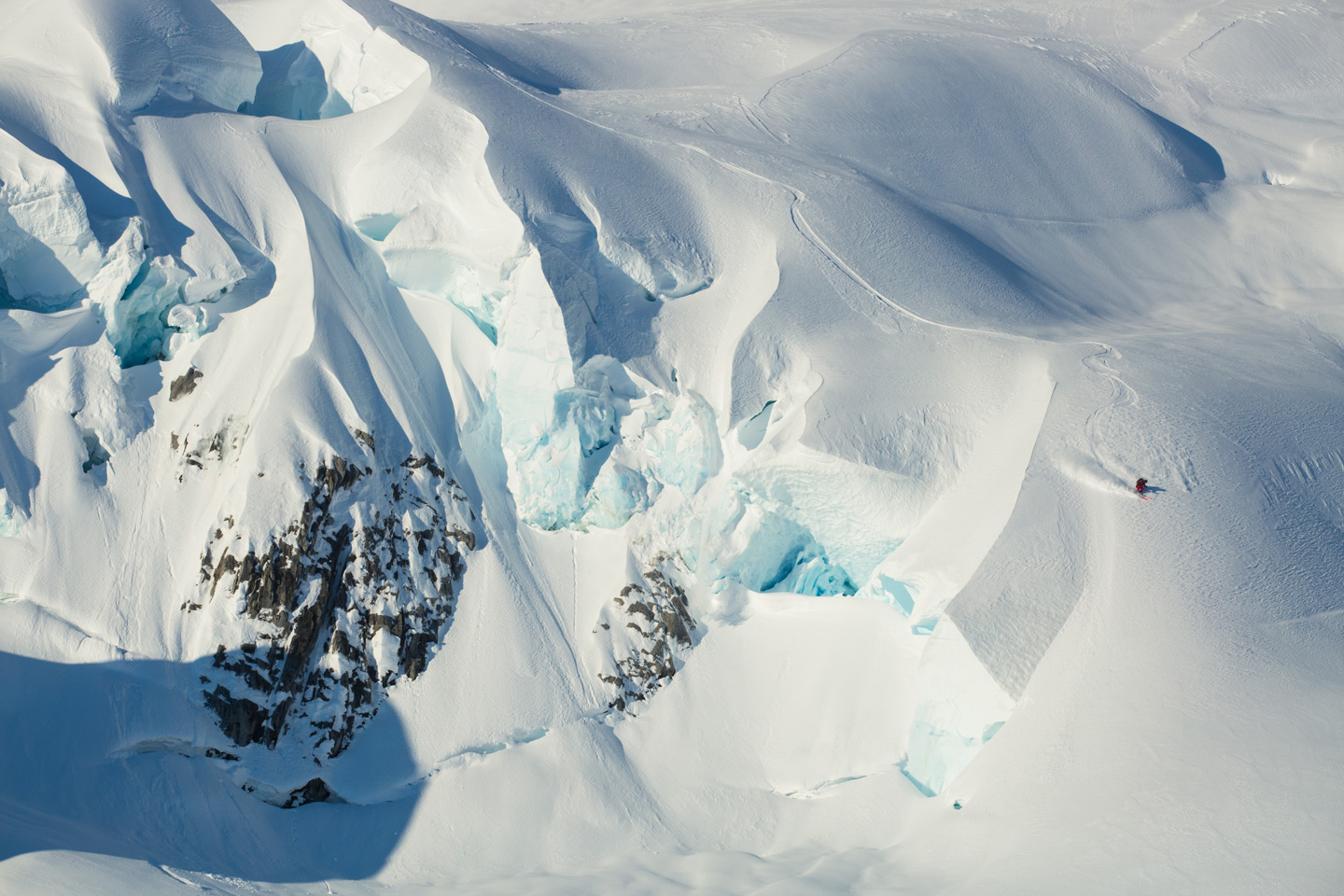
above When the conditions get tough, the tough get creative. McKenna Peterson takes the aesthetic line choice on Mt. Harris, another peak surrounding camp.
“I’ve skied a lot with Zach, who’s from Girdwood and has spent a lot of time in the mountains of Alaska,” Sam says. “Henry is my main ski partner at home, smart with a good sense of when to go for it and when to pull back, which I kind of lack. And Elliott …well, Elliott is just a lunatic.”
As the crew began to take shape, they enlisted Tim Jones to film and snow specialist Steve Mace to guide, although everyone would take part in decision making. For additional athletic prowess, Sam reached out to SCOTT teammate McKenna Peterson. Sam and McKenna had been on numerous trips together, so he knew she would both fit well in the group and be comfortable with big objectives.
“When you’re somewhere for three weeks with the same seven people is, it’s easy to get in little tiffs,” Sam says. “McKenna rips, and is confident enough to make her own choices based on her own comfort levels and knowledge. But as a person she’s just all time. If you’ve ever met her she’s amazing. And that’s almost as important.”
above McKenna Peterson takes in the view during a bluebird day in the Fairweathers.
While McKenna had been to Alaska before, it had been similar to Cohen’s experiences—all heli access, and mostly in more established zones. But while that gave her confidence for the magnitude of the terrain, the rest of the process would be something new. And the Fairweathers are a hefty place for firsts.
“I’d skied around Girdwood and Valdez, AK before, but this was my first time in Haines and my first experience accessing those types of lines by foot,” she says. “I knew that would be the biggest difference: skiing the type of classic Alaska-style lines I’d done previously by helicopter, but this time I had to get there on my own.”
“I definitely wasn’t bailing,” Sam says. “There was no way. We just decided we’d have to try harder, be a little smarter, and look for different lines. At that point, we were just in it for whatever it was worth. Which to me, was a lot.”
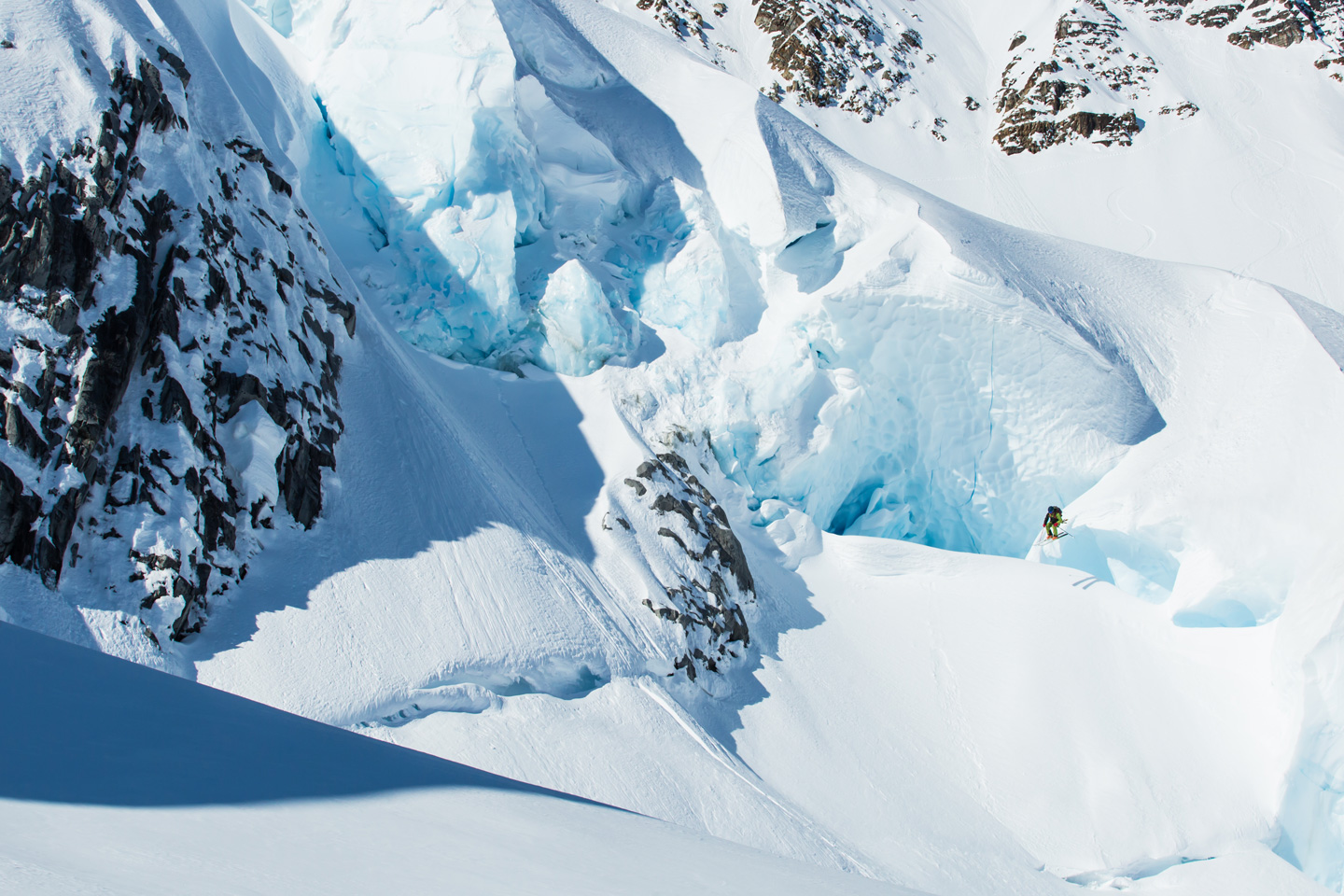
above While the Brothel may have been the main objective, the Fairweather Range has plenty of options—just be ready for the bergschrunds. Zach Halverson gets airborne on Mt. Harris.
The team was officially assembled, and on March 23, 2017, Sam landed in Juneau and loaded a ferry to Haines, where he spent the next few days scouting with pilot Drake Olson. The snowpack had been thin in Alaska and there were reports of widespread instability, and when the rest of the crew arrived he described conditions as simply “dismal.” But as is often the case in Alaska, you either take what you can get or you don’t get anything at all. So, with their flight scheduled anytime over the next few days, they stacked their gear into a massive pile and hunkered down to wait. On April 6, the weather cleared enough for Drake to take them in.
“We sat in town for a week and a half waiting for a window, and when we got our chance it was like, ‘Alright, it’s now or never,’” Sam says. “We got out there and it was terrible. Zach and I bumped into the field first night, and the rest of the crew flew in the next day. The snow was the best right then, but we didn’t have any knowledge of the terrain or conditions, so we couldn’t just go jumping on stuff.”
Ability, experience and skill are all important characteristics in a good ski partner, but it’s patience, flexibility and a good sense of humor that makes for a great teammate. It was either stay and leave fate to the snow gods, or call it quits altogether. They were in a beautiful place, surrounded by beautiful mountains. Things could be much worse.
“I definitely wasn’t bailing,” Sam says. “There was no way. We just decided we’d have to try harder, be a little smarter, and look for different lines. At that point, we were just in it for whatever it was worth. Which to me, was a lot.”
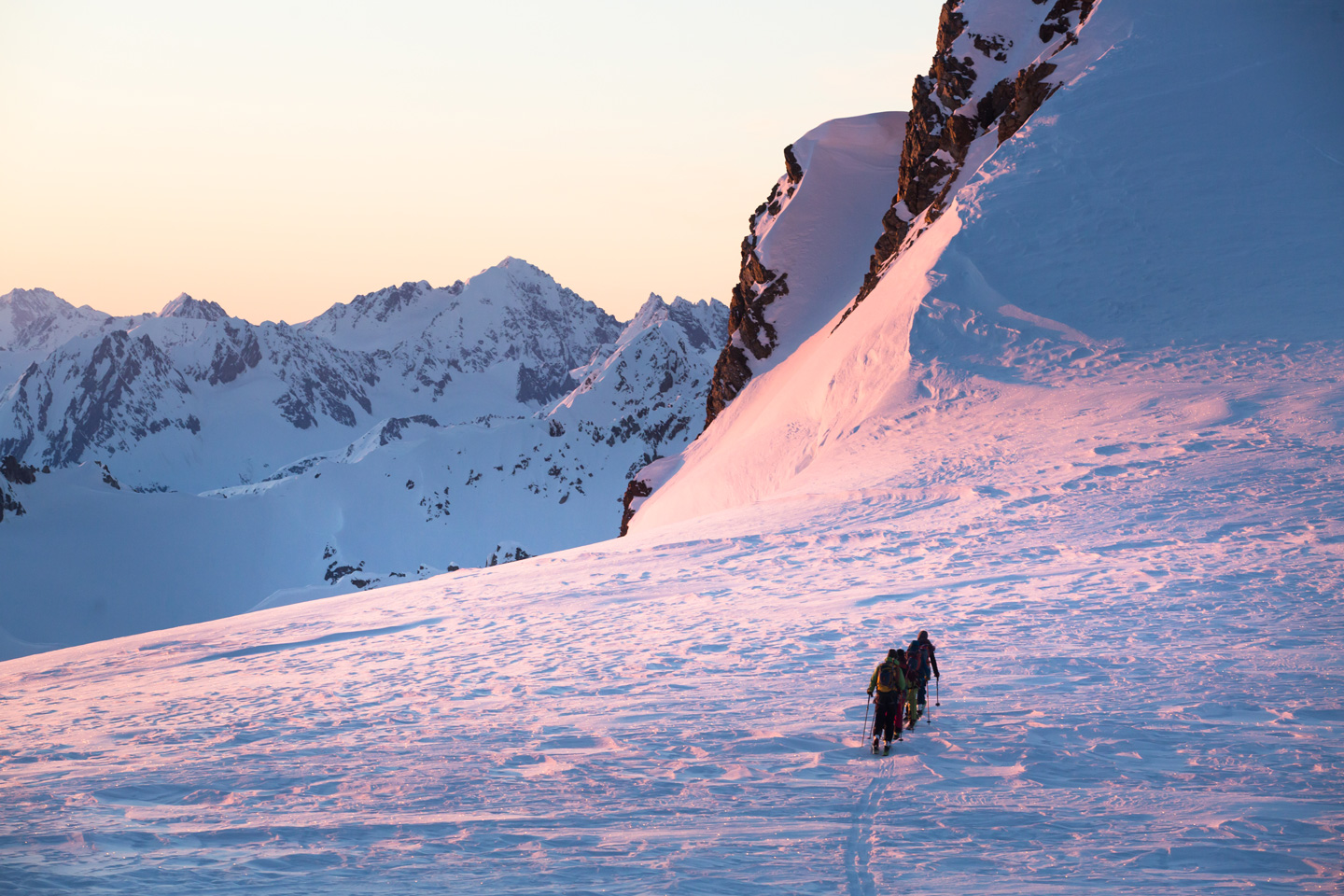
above The snow may be crap, but at least the sunsets are phenomenal.
After they finished ferrying gear, the team hurried to dig in and set up camp. Even knowing the likely conditions, the view was overwhelming—the surrounding peaks were a gallery of endless spines, couloirs and steep faces, a lifetime of lines only a few thousand feet away. Inspired, the first afternoon they set out for some skiing and reconnaissance, and were immediately rebuffed by what Sam describes as “absolute dog shit.”
But the more they explored over the next few days, the more they became comfortable with their options. It was a quest for good snow, one that more often ended in a few-thousand feet of ice skittering than any decent skiing. But absence makes the heart grow fonder, a saying that applies as much to powder as it does romance.
“When we finally found snow that was decent, it just meant the world to us,” Sam says. “We were ecstatic. There’d be an area with an inch of three-week-old recycled wind buff, and we’d be saying, ‘Damn! That was sick!’”
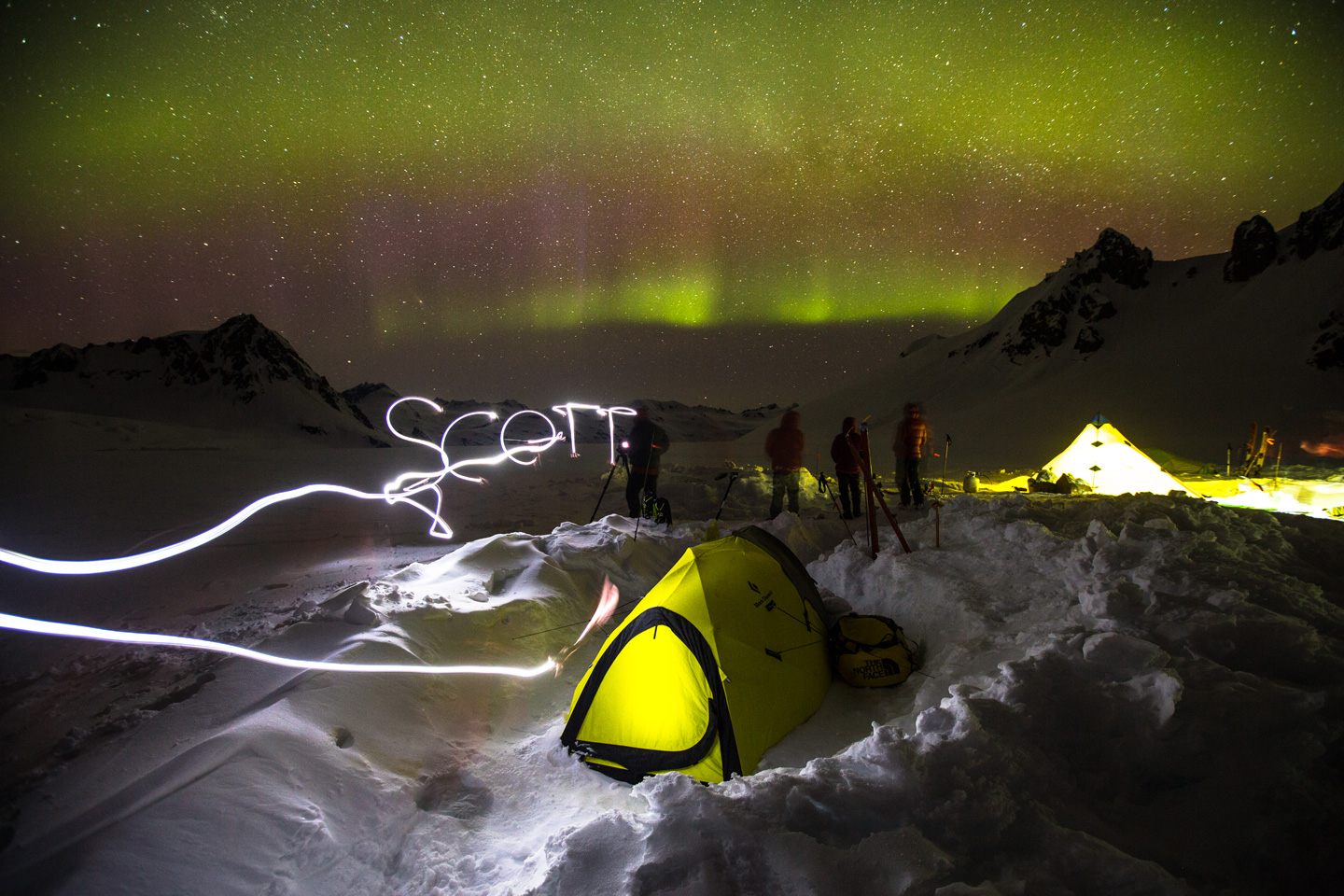
above An otherworldly scene in an otherworldly place. The Northern Lights dance above camp, as the team puts on a light show of their own.
With each dubious line came more knowledge, of the snowpack, the mountains, the likelihood of success on a bigger objective, of team dynamics. Trips of this magnitude are a learning experience, both on a group and individual level. For McKenna, already an accomplished athlete, it was a lesson in juxtaposition.
“It was so much different than heliskiing,” McKenna says. “It was more intimidating and obviously a lot more work, and each day required more planning. We were limited by time and by physical ability, so we were only skiing a few lines a day rather than the eight or nine from a heli. But I also enjoyed it more; there’s something about climbing lines before you ski them that makes you more comfortable with the slope and more comfortable when it does come time to drop in.”
Meanwhile, between multi-thousand-foot missions of sastrugi, wind chunder and the occasional pocket of powder, camp life continued. High winds and warming temps left them tent-bound for a few days, and they broke up endless games of dominoes and dice with doodling, reading, and improving their accommodations. A few nights they fired up the generator they’d brought, and watched a few movies, including “Step Brothers” and “Catch Me if You Can.” Henry was scheduled to arrive a week later, and when he got to Haines they requested via satellite phone that he bring Oreos. Sugar is a magical substance.
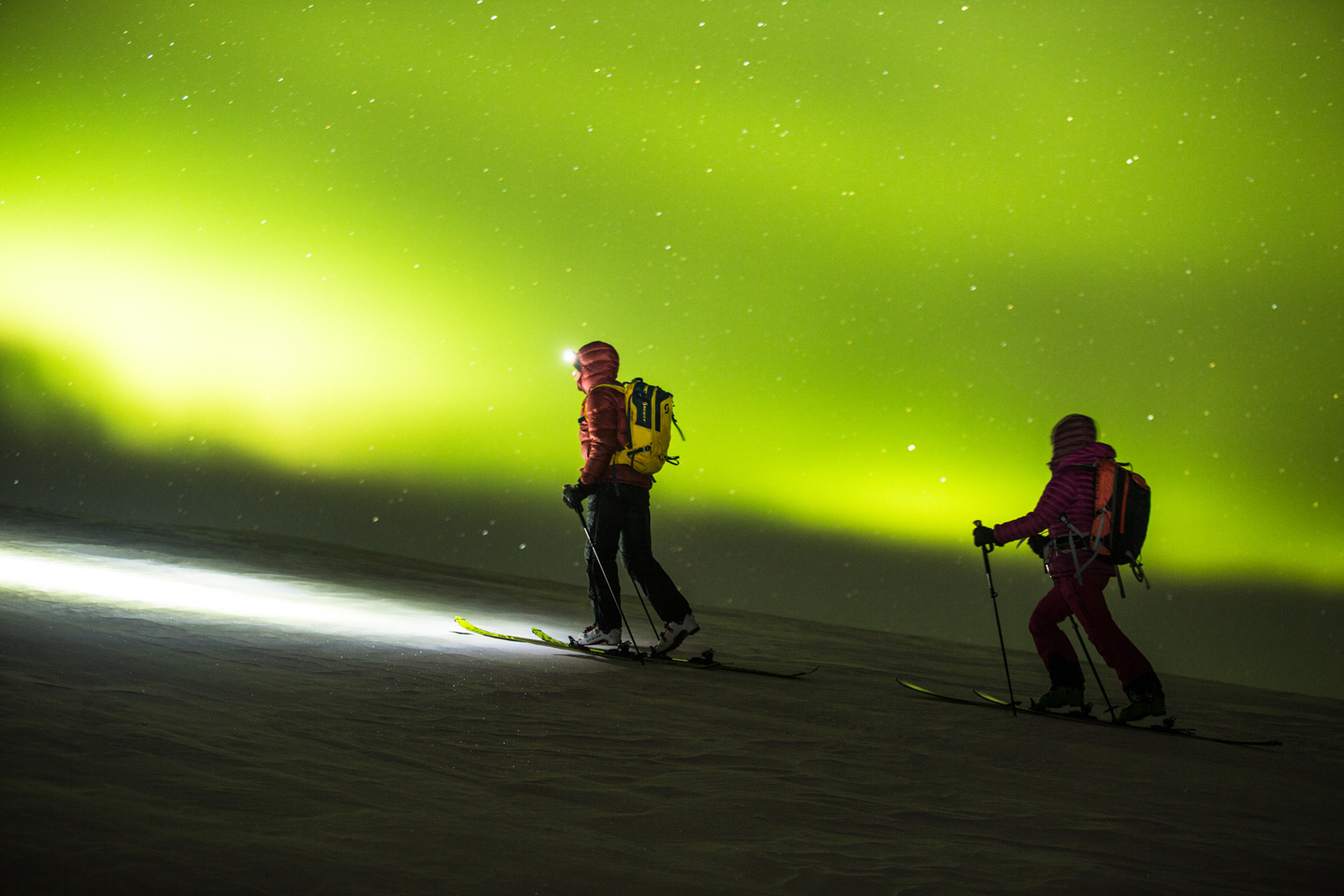
above Henry Gates and McKenna Peterson, taking in the northern lights from the skin track.
The camp also began to take on a more permanent—if unconventional—look. Some of the construction was utilitarian: they built a table from some plywood they’d picked up at the hardware store in Haines, and a high-end outhouse at the edge of the glacier with a toilet seat and cushion they’d flown in. Other projects were more motivated by boredom than any sort of practicality.
“One day, Elliott dug this giant hole in the middle of camp,” Sam says. “At first I was mad, because I almost fell into the thing in the middle of the night, but it eventually turned into a huge tunnel that came up in the cook tent. We ran an extension cord through it, and ended up doing a full day of editing inside.”
But it wasn’t all jokes, games and snacks. Both Sam and McKenna got sick; Sam had a cold when they arrived, which McKenna caught and spent nearly 10 days recovering from. It was discouraging, but ironically, it was also both the down time and sickness that kept them going back out each day. You can only play so many hours of games, dig so many tunnels, and make so many bathroom improvements before cabin fever starts setting in.
“It was somewhat easy to stay motivated, because it was either ski or sit in camp and read a book or play cribbage or dominoes,” McKenna says. “Even when the weather was crappy or the light was totally flat, we’d go out and ski just to do something. It was more just frustrating, being out there and not being able to find anything that met the ‘Alaska’ expectations.”
All the while the Brothel sat in the distance, a beckoning white fin on the horizon. It was both inviting and imposing, and the team wavered on whether it was realistic enough to even be worth the attempt. When you’ve come such a long way, that can be a difficult decision to make.
“There were a few times we wanted to go for it, but didn’t,” Cohen says. “One time I woke up for a weather check, and it seemed good but just didn’t feel right. It was one of the few times in my life where I thought, ‘I don’t think we should do this. I’m scared.’ Sometimes it’s hard to see the difference between fear and irrational thought.”
Then, after two weeks of waiting and searching and more waiting, the team had a meeting. There was never going to be a “perfect day” to ski the Brothel, they knew, but conditions were as good as they’d be. It was time to attempt their main objective. The Brothel was waiting.
“There were a few times we wanted to go for it, but didn’t,” Sam says.
“One time I woke up for a weather check, and it seemed good but just didn’t feel right. It was one of the few times in my life where I thought, ‘I don’t think we
should do this. I’m scared.’ Sometimes it’s hard to see the difference between fear and irrational thought.”
above After two weeks of waiting, sickness, games and cabin fever, the crew prepares to drop in on the Brothel’s main face.
At 800 vertical Feet, the Brothel’s main face is short but hefty. The high-consequence rib of narrow spines overhangs 2,000 feet of ice and rock, and after hopping the bergschrund at the bottom you must traverse hard right, through a choke, and out onto an isolated snow field. A narrow ice bridge provides the only way through a web of crevasses and seracs, which ends in another bergschrund hop before reaching the safety of the glacier and the final turns to camp.
For the previous groups who’d ridden it, the descent had been the most difficult part—a helicopter plopped them at the top, and they picked off their lines from there. For Sam’s group, there were far more unknowns; no one had climbed it before, and the route up had some obviously difficult sections. Beyond that, it was all speculation and the will of the mountain.
The zone also matched many of the instabilities they’d been seeing over the previous weeks, issues that would only worsen over the coming days. If the Brothel didn’t happen now, it wasn’t going to happen at all—not exactly inspiring but better than being reckless, so they kept their expectations to a good view and some low-angle glacier turns. As Warren Miller would say, there’s always next year.
Things looked good when they reached the bottom, and they began the long, slow climb, roping up and revaluating conditions as they went. To access the Brothel’s main spine wall required them to first ski a different, 1,000-foot glacier run, which turned out to be the best snow of the trip—and, ironically, the only line they didn’t film. Considering it a personal glory lap, they continued onwards and upwards, swapping skintrack for bootpack on the final pitch.
A thousand feet later, they popped up onto the ridge. Their relief, however, was almost spoiled when a cornice fell just moments after they reached the top, leading to a few hectic and scary minutes of uncertainty.
And then they were there, on top of the Brothel with dramatic peaks in all directions, raking at the clear April sky. The wall of spines tumbled towards the valley bottom, so steep that it was impossible to see the entire line. It was the inspiration behind the entire trip, and had required battling through sickness and boredom and sweat and fear to reach. But as they each dropped, all that disappeared in a few long, dreamy seconds.
“We all got to the bottom, and everyone was just beaming,” McKenna says. “Everything about that day made everything else worthwhile: the cabin fever, getting sick, being cold and uncomfortable, lines so crappy they were almost too scary to even ski. All of those negative feelings were washed away in that one day.”
above Taming the beast. Sam Cohen, mid-line on one of the Brothel’s many spines.
All the variables had lined up to create a perfect moment in time; the beast was conquered, and with their main objective completed the crew was left to scope some potential options for future trips. “Test Monkey” and “Corrugated” were two of these, both adjacent to the Brothel, but conditions forced them to back down on an attempt on Corrugated. Then it was time to fly home. Three weeks on the glacier had them fiending for vegetables and other fresh fare, but it also made leaving bittersweet—both the place, and the people who had it so memorable.
Sam, McKenna and Zach spent one more night on the glacier, celebrating their victory with a fire and one final camp meal before Drake arrived in the morning. With the Brothel fading in the distance, Cohen found himself thinking of mountains to come.
“It opened the door for bigger missions I want to do,” Sam says. “You can’t just jump from ranges like the Wasatch to the Wrangells or the Himalaya. It doesn’t really translate. Something like the Brothel, where it took a bit more smarts than ability, was an eye-opener. Lines that seemed like dreams become possible.”
“We all got to the bottom, and everyone was just beaming,” McKenna says. “Everything about that day made everything else worthwhile: the cabin fever, getting sick, being cold and uncomfortable, lines so crappy they were almost too scary to even ski. All of those negative feelings were washed away in that one day.”
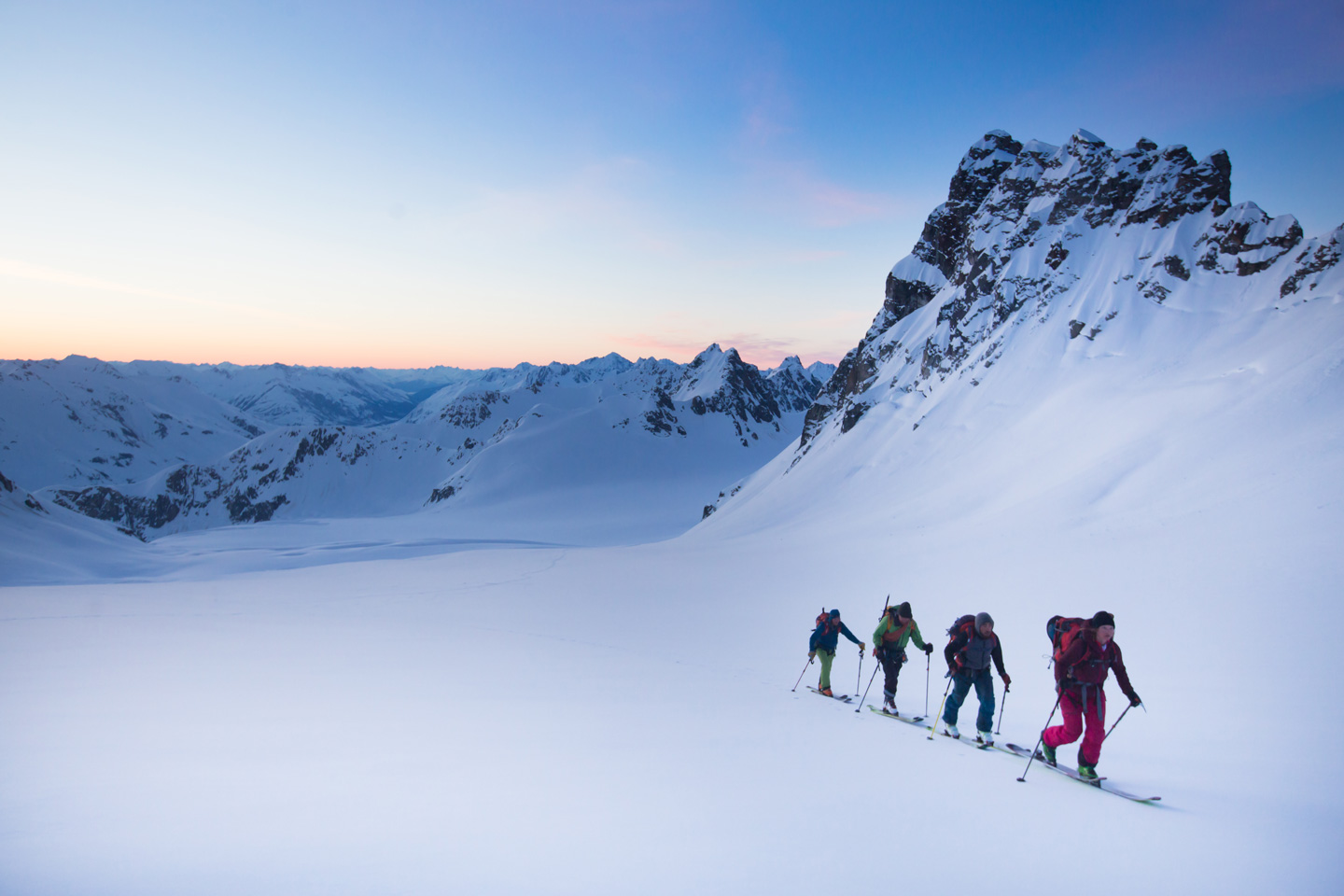
above With the Brothel conquered, the crew does some evening exploring on the glacier.
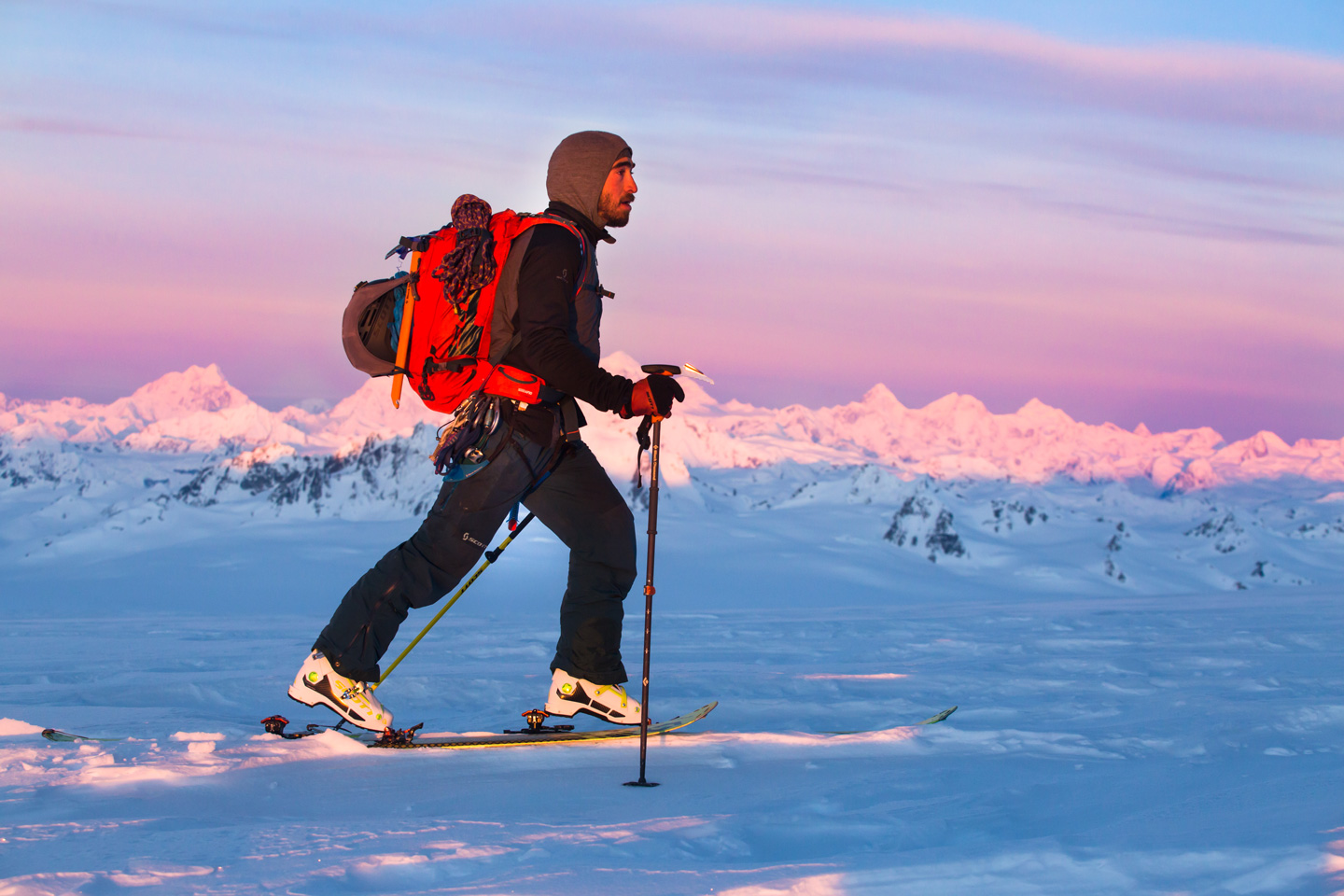
ABOVE Sam Cohen, enjoying a dream five years in the making.
Presented by The Ski Journal, in partnership with
